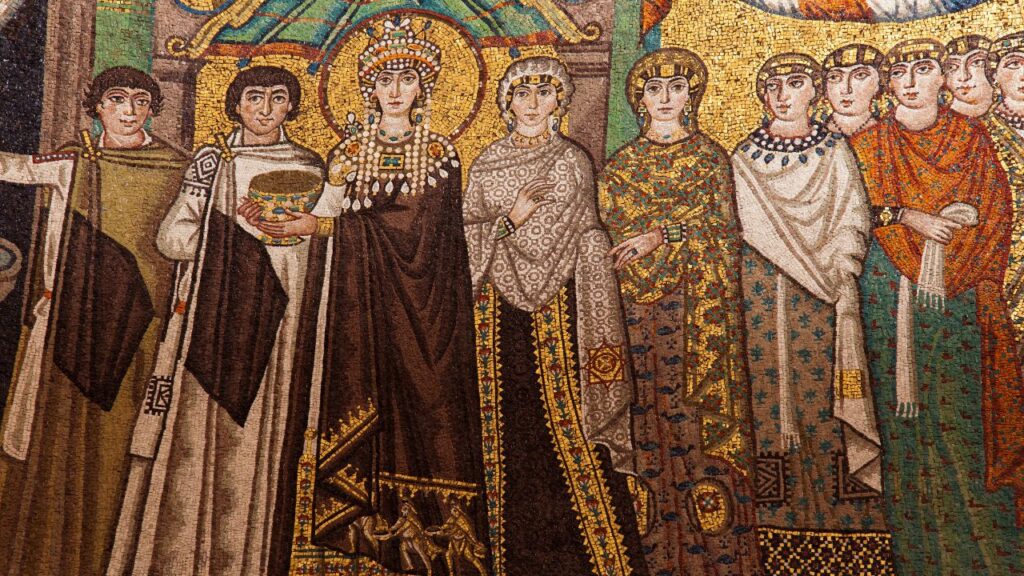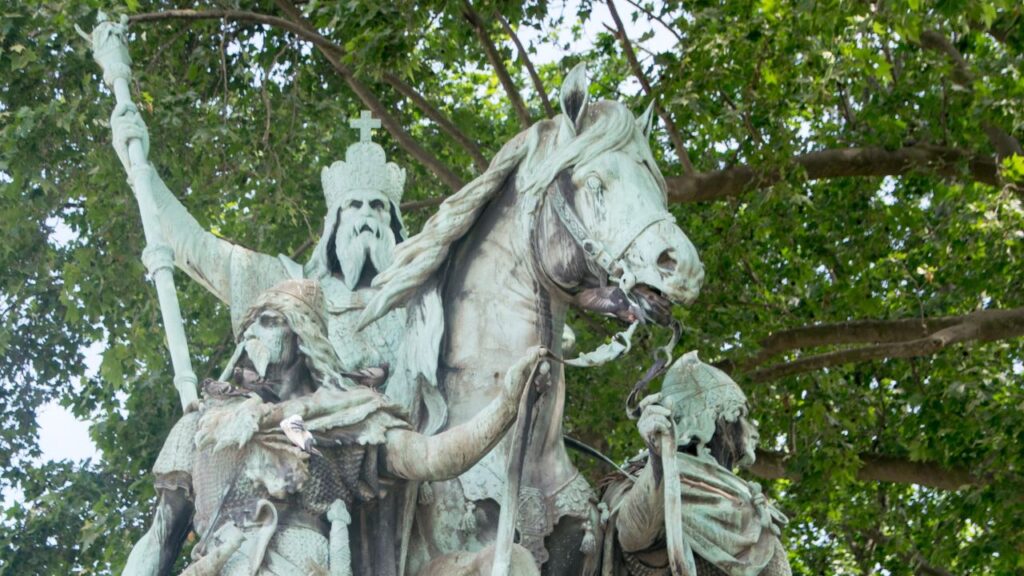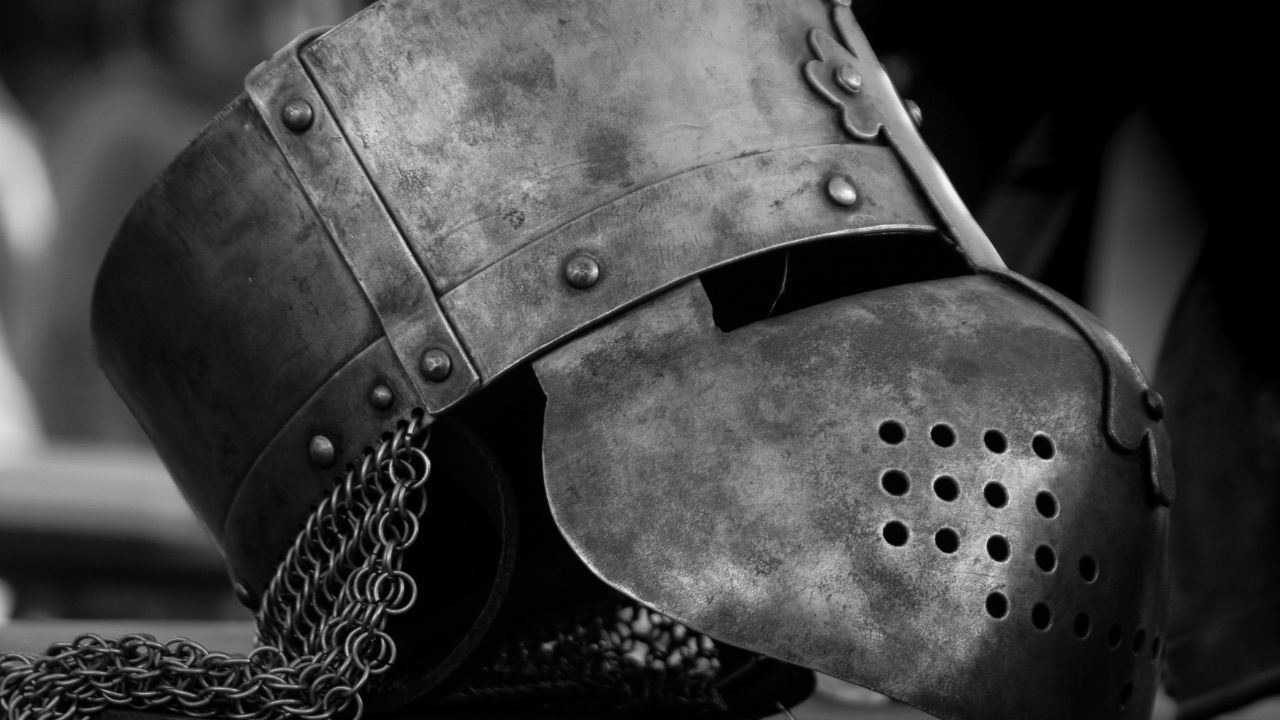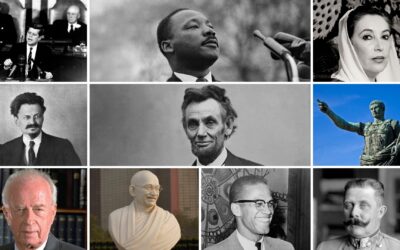Introduction
The Middle Ages, a period stretching from the 5th to the 15th century, was a time of immense cultural, political, and social transformation. During this era, numerous empires rose to prominence, each leaving a lasting impact on the regions they ruled and the world at large. In this comprehensive analysis, we will explore nine of the greatest empires of the Middle Ages, delving into their origins, achievements, and lasting legacies. From the mighty Byzantine Empire in the East to the sprawling Inca Empire in the Andes, these empires have shaped the course of history and continue to influence our modern world. Join us as we embark on a journey through time, retracing the footsteps of emperors, conquerors, and visionaries who shaped the medieval world.
The Byzantine Empire

Origins and Background
The Byzantine Empire, also known as the Eastern Roman Empire, emerged in the 4th century AD when the Roman Emperor Constantine the Great moved the capital of the Roman Empire from Rome to Byzantium, a city strategically located at the crossroads of Europe and Asia. Byzantium, renamed Constantinople (modern-day Istanbul), served as the capital of the Byzantine Empire for over a thousand years.
The Byzantine Empire was a continuation of the Roman Empire in the East, preserving many aspects of Roman culture, law, and governance. However, over time, the empire developed its own distinct identity, blending Greco-Roman traditions with Christian influences and Eastern elements.
Achievements and Innovations
The Byzantine Empire was known for its exceptional achievements in various fields, including:
- Art and Architecture: Byzantine art and architecture were marked by a synthesis of Roman, Greek, and Christian elements, resulting in the creation of iconic structures like the Hagia Sophia and the development of the distinctive Byzantine style, characterized by intricate mosaics, domes, and gold leaf decorations.
- Law: The Byzantine Emperor Justinian I (527-565 AD) commissioned a comprehensive codification of Roman law known as the Corpus Juris Civilis, which later served as the foundation of civil law in many European countries.
- Military and Diplomacy: The Byzantine Empire was renowned for its strong and highly disciplined military, which included the elite Varangian Guard and the use of Greek fire, a devastating incendiary weapon. The empire also employed diplomacy and strategic marriages to maintain alliances and secure its borders.
- Preservation of Knowledge: The Byzantine Empire played a crucial role in preserving and transmitting ancient Greek and Roman texts, as well as producing its own scholarly works in theology, philosophy, and science. This wealth of knowledge would later inspire the Renaissance in Western Europe.
Decline and Legacy
The Byzantine Empire faced numerous challenges throughout its history, including invasions by Arab, Turkish, and Western European forces, as well as internal strife and religious schisms. In 1204, during the Fourth Crusade, Constantinople was sacked by Western European crusaders, dealing a severe blow to the empire. The weakened empire endured several more centuries, but ultimately fell to the Ottoman Turks in 1453.
Despite its decline, the Byzantine Empire left a lasting legacy on world history. It served as a bridge between the ancient and medieval worlds, preserving and transmitting classical knowledge, fostering cultural exchange between East and West, and shaping the development of Eastern Orthodox Christianity. The empire’s rich artistic and architectural traditions continue to influence and inspire artists and architects to this day.
The Abbasid Empire

Origins and Background
The Abbasid Empire, which ruled from 750 to 1258 AD, was the third caliphate in Islamic history and succeeded the Umayyad Caliphate. The empire’s founders were the descendants of Abbas, an uncle of the Islamic prophet Muhammad. The Abbasids came to power after a rebellion against the Umayyad rulers, culminating in the Battle of the Zab in 750 AD.
The Abbasid Caliphate saw its capital move from Damascus (in present-day Syria) to the newly established city of Baghdad, in modern-day Iraq. The shift of power to the east marked a significant transformation in the Islamic world, as the Abbasid rulers embraced Persian culture and sought to create a more inclusive, cosmopolitan state.
Achievements and Innovations
The Abbasid Empire is celebrated for its numerous accomplishments and innovations, including:
- The Golden Age of Islam: The Abbasid period is often regarded as the Islamic Golden Age, a time of unprecedented intellectual, cultural, and scientific achievements. Scholars from various religious and ethnic backgrounds were encouraged to translate, study, and build upon the works of ancient Greek, Roman, Persian, and Indian scholars.
- Advancements in Science and Medicine: The Abbasid Empire saw remarkable advancements in various fields, including astronomy, mathematics, medicine, chemistry, and philosophy. Notable figures like Al-Khwarizmi, who developed algebra, and Ibn Sina (Avicenna), a polymath who wrote extensively on medicine, contributed significantly to the empire’s intellectual legacy.
- Literature and Poetry: The Abbasid period witnessed a flourishing of Arabic literature and poetry, with works like “One Thousand and One Nights” and the poetry of Al-Mutanabbi reflecting the rich cultural tapestry of the empire.
- Architecture: The Abbasid Empire featured impressive architectural achievements, such as the construction of the Great Mosque of Samarra, the largest mosque in the world at the time, and the Round City of Baghdad, which was designed as a perfect circle and served as the empire’s political and cultural center.
Decline and Legacy
The decline of the Abbasid Empire can be attributed to a variety of factors, including internal strife, economic challenges, and external threats. The empire gradually lost control over its vast territories, as regional powers gained autonomy and competing dynasties emerged. In 1258, the Mongols, led by Hulagu Khan, sacked Baghdad and effectively ended the Abbasid Caliphate.
Despite its fall, the Abbasid Empire left a profound and enduring impact on world history. Its contributions to science, medicine, literature, and the arts continue to inspire and shape modern scholarship. The empire’s emphasis on learning and cultural exchange fostered an environment in which ideas could flourish, laying the foundation for future intellectual advancements and enriching the cultural heritage of the Islamic world.
The Khmer Empire

Origins and Background
The Khmer Empire, which thrived from the 9th to the 15th century in Southeast Asia, was one of the most powerful and influential civilizations in the region. Centered in what is now Cambodia, the empire also encompassed parts of modern-day Thailand, Laos, and Vietnam. The Khmer Empire was established by King Jayavarman II, who declared independence from the Javanese kingdom of Srivijaya and unified the disparate territories of the region under his rule.
Achievements and Innovations
The Khmer Empire is renowned for its remarkable accomplishments and innovations, including:
- Architecture: The Khmer Empire is best known for its extraordinary architectural achievements, most notably the iconic temple complex of Angkor Wat. Built in the 12th century by King Suryavarman II, Angkor Wat is the largest religious monument in the world and remains an enduring symbol of Khmer architectural prowess.
- Urban Planning and Hydraulic Engineering: The Khmer Empire developed sophisticated urban planning techniques and advanced hydraulic engineering systems. The capital city of Angkor was designed with intricate water management systems, including reservoirs, canals, and moats, which facilitated agriculture and allowed the population to flourish.
- Art and Sculpture: The Khmer Empire produced exceptional works of art and sculpture, characterized by intricately carved stone reliefs and statues that adorned temples and other structures. These artistic achievements reflect a blend of Hindu and Buddhist influences, as well as the empire’s unique cultural identity.
- Language and Literature: The Khmer Empire developed the Khmer script, which is still used in Cambodia today. The empire also made significant contributions to literature, preserving ancient Indian epics like the Ramayana and the Mahabharata and producing original works of poetry, drama, and history.
Decline and Legacy
The decline of the Khmer Empire was the result of several factors, including internal conflicts, environmental challenges, and external pressures. The empire faced invasions from neighboring Thai and Vietnamese kingdoms and struggled with environmental changes that disrupted its agricultural systems. By the 15th century, the empire had fragmented, with the capital city of Angkor eventually abandoned.
Despite its decline, the Khmer Empire left a lasting legacy on the history and culture of Southeast Asia. Its architectural marvels, such as Angkor Wat, continue to captivate visitors from around the world and serve as a testament to the empire’s remarkable artistic and engineering achievements. The empire’s contributions to language, literature, and art have had a lasting impact on the cultural heritage of Cambodia and the surrounding region.
The Mongols

Origins and Background
The Mongols, originating from the nomadic tribes of the Central Asian steppes, established the largest contiguous empire in history under the leadership of Genghis Khan. Born as Temujin around 1162, Genghis Khan united the various Mongol tribes and embarked on a series of conquests that would span from Europe to the Middle East and Asia. At its height, the Mongol Empire covered approximately 24 million square kilometers (9.27 million square miles), including parts of modern-day Russia, China, the Middle East, and Eastern Europe.
Achievements and Innovations
Despite their reputation as ruthless conquerors, the Mongols made significant contributions to the societies they ruled, such as:
- Pax Mongolica: The Mongol Empire brought about a period of relative peace and stability known as the Pax Mongolica, which facilitated trade, cultural exchange, and the movement of people and ideas across the vast territories under Mongol control.
- The Silk Road: The Mongols played a crucial role in revitalizing and protecting the Silk Road, the ancient network of trade routes that connected the East and West. This exchange of goods, knowledge, and ideas fostered the spread of technology, religion, and culture between different regions of the empire.
- Postal System and Communication: The Mongols developed an efficient postal system known as the Yam, which facilitated communication across the vast expanse of the empire. This network of relay stations allowed for the swift transmission of messages and goods, enabling the Mongol rulers to maintain control over their territories.
- Religious Tolerance: The Mongol Empire was notable for its religious tolerance, allowing subjects to practice their faiths without interference. This policy of religious freedom contributed to the empire’s stability and facilitated the coexistence of various religious and cultural groups.
Decline and Legacy
The decline of the Mongol Empire can be attributed to several factors, including internal strife, overextension, and the growing strength of regional powers. After the death of Genghis Khan’s grandson, Kublai Khan, in 1294, the empire began to fragment into smaller, independent khanates. These khanates, such as the Golden Horde in Russia and the Ilkhanate in Persia, gradually lost power and influence, leading to the eventual dissolution of the Mongol Empire.
Despite its decline, the Mongol Empire left an indelible mark on world history. Its far-reaching conquests facilitated the spread of culture, technology, and ideas across Eurasia, shaping the development of numerous societies and regions. The Mongols’ legacy can still be felt today in the linguistic, religious, and cultural diversity that characterizes many of the areas once under their rule.
The Ming Dynasty

Origins and Background
The Ming Dynasty, which ruled China from 1368 to 1644, was one of the most prosperous and culturally rich periods in Chinese history. The dynasty was founded by Zhu Yuanzhang, a peasant leader who led a successful rebellion against the Mongol-led Yuan Dynasty. Zhu Yuanzhang, who took the title of Emperor Hongwu, established the new dynasty’s capital in Nanjing and later moved it to Beijing.
Achievements and Innovations
The Ming Dynasty is celebrated for its numerous accomplishments and innovations, including:
- Economy and Trade: The Ming Dynasty saw a period of economic growth and prosperity, with advancements in agriculture, industry, and trade. The dynasty encouraged maritime trade and exploration, as evidenced by the famous voyages of Admiral Zheng He, who led a fleet of Chinese ships on expeditions throughout the Indian Ocean, reaching as far as East Africa.
- Art and Culture: The Ming Dynasty was a golden age for Chinese art and culture, with achievements in various fields, such as painting, calligraphy, ceramics, and literature. Notable works of art from this period include blue-and-white porcelain and the detailed landscape paintings of artists like Shen Zhou and Wen Zhengming.
- Architecture: The Ming Dynasty is renowned for its architectural accomplishments, including the construction of the Forbidden City in Beijing, which served as the imperial palace for the Ming and Qing dynasties. The Ming Dynasty also saw the rebuilding and reinforcement of the Great Wall of China, a massive defensive structure that remains an iconic symbol of China’s history and ingenuity.
- Science and Technology: The Ming Dynasty witnessed advancements in various fields of science and technology, such as astronomy, mathematics, and engineering. The dynasty also saw the development of the world’s first comprehensive encyclopedia, the Yongle Encyclopedia, commissioned by Emperor Yongle and containing over 22,000 volumes of knowledge.
Decline and Legacy
The decline of the Ming Dynasty can be attributed to several factors, including internal corruption, economic challenges, and external threats. The dynasty faced invasions from the Manchu tribes to the north, and in 1644, the Manchus captured Beijing, marking the end of the Ming Dynasty and the beginning of the Qing Dynasty.
Despite its decline, the Ming Dynasty left a lasting impact on Chinese history and culture. Its achievements in art, architecture, science, and technology continue to inspire and shape modern Chinese society. The dynasty’s promotion of maritime trade and exploration laid the foundation for China’s role as a global economic power and contributed to the spread of Chinese culture and influence throughout the world.
The Holy Roman Empire

Origins and Background
The Holy Roman Empire, a complex political entity that existed in various forms from 800 to 1806, was centered in Central Europe and encompassed parts of present-day Germany, Austria, Switzerland, Italy, Belgium, the Netherlands, Czech Republic, and other countries. The empire’s origins can be traced back to the coronation of Charlemagne, the King of the Franks, as Holy Roman Emperor by Pope Leo III in 800 AD.
The Holy Roman Empire was characterized by its decentralized political structure, with power distributed among numerous dukes, princes, bishops, and other regional rulers. The emperor, who was elected by a group of powerful nobles known as the Prince-Electors, held a position of authority but often struggled to assert control over the various territories within the empire.
Achievements and Innovations
The Holy Roman Empire is notable for its diverse contributions to the fields of politics, culture, and society, such as:
- Legal and Political Developments: The Holy Roman Empire played a significant role in shaping European legal and political systems, with the development of various institutions, such as the Imperial Diet, a legislative assembly composed of representatives from different territories, and the Peace of Westphalia, which established the modern concept of state sovereignty.
- Art, Architecture, and Culture: The Holy Roman Empire witnessed a flourishing of art, architecture, and culture, particularly during the reign of Emperor Charles IV in the 14th century and the later Renaissance period. Notable achievements include the construction of Gothic cathedrals, such as Cologne Cathedral, and the proliferation of artistic styles, such as the Northern Renaissance, which emphasized naturalism and detail.
- Education and Learning: The Holy Roman Empire was home to some of the earliest European universities, including the University of Bologna, the University of Paris, and the University of Vienna. These institutions played a crucial role in the development of Western education and the spread of knowledge throughout Europe.
Decline and Legacy
The decline of the Holy Roman Empire was a gradual process, marked by political fragmentation, religious conflicts, and the growing influence of powerful European nations, such as France, Spain, and Sweden. The empire was formally dissolved in 1806, when Emperor Francis II abdicated his title in the face of Napoleon Bonaparte’s expanding French Empire.
Despite its complex and often tumultuous history, the Holy Roman Empire left a lasting impact on European politics, culture, and society. Its contributions to legal and political systems, art and architecture, and education continue to influence the development of Europe and the Western world. The empire’s legacy is also evident in the modern nation-states that once formed part of its vast and diverse territories.
The Empire of Mali

Origins and Background
The Empire of Mali, which flourished in West Africa from the 13th to the 16th century, was one of the largest and most powerful empires in the region. Centered in the fertile region of the Niger River, the Mali Empire encompassed present-day Mali, Senegal, Guinea, Mauritania, and parts of Niger and Burkina Faso. The empire was founded by Sundiata Keita, a Mande prince who led a successful revolt against the Sosso Kingdom and established the empire’s capital in the city of Niani.
Achievements and Innovations
The Empire of Mali is celebrated for its numerous accomplishments and innovations, such as:
- Wealth and Trade: The Mali Empire was renowned for its wealth, which was largely derived from its control of lucrative trade routes that connected West Africa to North Africa and the Mediterranean world. Gold, salt, and slaves were among the valuable commodities exchanged along these routes, contributing to the empire’s prosperity and influence.
- Learning and Scholarship: The Mali Empire was a center of learning and scholarship, particularly in the city of Timbuktu, which was home to the prestigious Sankore University. Scholars from throughout the Islamic world traveled to Timbuktu to study subjects such as religion, law, astronomy, and medicine, and the city’s libraries contained thousands of valuable manuscripts.
- Architecture and Urban Planning: The Mali Empire witnessed the construction of impressive architectural feats, such as the Great Mosque of Djenné, which remains one of the largest mud-brick structures in the world. The empire’s cities, such as Timbuktu and Gao, were well-planned, featuring sophisticated infrastructure and a range of public and private buildings.
- Diplomacy and Cultural Exchange: The Mali Empire maintained diplomatic relations with other African and Islamic states and facilitated cultural exchange between West Africa and the broader Islamic world. The empire’s most famous ruler, Mansa Musa, famously undertook a pilgrimage to Mecca in 1324, which brought the Mali Empire to the attention of the Islamic world and Europe.
Decline and Legacy
The decline of the Mali Empire can be attributed to several factors, including internal strife, economic challenges, and external threats from rival states such as the Songhai Empire. By the late 16th century, the Mali Empire had fragmented into smaller states, losing much of its former wealth and influence.
Despite its decline, the Mali Empire left a lasting impact on West African history and culture. Its contributions to trade, learning, and diplomacy fostered the exchange of ideas, technology, and culture between West Africa and the broader world, shaping the development of the region and its people. The empire’s legacy can still be felt today in the rich cultural heritage of the nations that once formed part of its vast and diverse territories.
The Aztec Empire

Origins and Background
The Aztec Empire, which dominated the Valley of Mexico from 1428 to 1521, was one of the most powerful and advanced civilizations in the Americas during the Postclassic period. The empire was established through a triple alliance between the city-states of Tenochtitlan, Texcoco, and Tlacopan, with the Mexica people of Tenochtitlan playing a leading role in the alliance. The Aztec capital, Tenochtitlan, was located on an island in Lake Texcoco and was a marvel of urban planning and engineering.
Achievements and Innovations
The Aztec Empire is renowned for its numerous accomplishments and innovations, such as:
- Agriculture and Economy: The Aztecs developed advanced agricultural techniques, including the construction of chinampas, or floating gardens, which enabled them to cultivate crops in the shallow lake waters surrounding their capital. The empire’s economy was based on a sophisticated system of tribute and trade, with a vast network of markets that facilitated the exchange of goods and resources throughout the region.
- Art and Architecture: The Aztecs were accomplished artists and architects, with achievements in various fields such as sculpture, pottery, painting, and metallurgy. Their monumental architecture, such as the Templo Mayor in Tenochtitlan, showcased their engineering prowess and religious devotion.
- Writing and Education: The Aztecs developed a system of writing that combined pictograms, ideograms, and phonetic symbols to record information related to history, religion, and daily life. Education was highly valued, with formal schools known as calmecac and telpochcalli providing instruction in various subjects, including writing, mathematics, history, and religion.
- Religion and Ritual: The Aztecs practiced a polytheistic religion that involved a complex pantheon of gods and goddesses, elaborate rituals, and human sacrifices. These religious practices were believed to maintain cosmic order and ensure the gods’ favor, particularly the sun god, Huitzilopochtli, who was associated with warfare and required regular offerings of human hearts.
Decline and Legacy
The Aztec Empire came to an abrupt end in 1521 with the arrival of Spanish conquistador Hernán Cortés and his forces. The combination of superior weaponry, alliances with local enemies of the Aztecs, and the devastating effects of diseases such as smallpox led to the conquest of the empire and the eventual colonization of Mexico by the Spanish.
Despite its tragic end, the Aztec Empire left a lasting impact on the history and culture of Mexico and the wider Mesoamerican region. The empire’s achievements in agriculture, art, architecture, and education continue to inspire and influence modern Mexican society, and the Aztec legacy is evident in the country’s rich cultural heritage, including its indigenous languages, traditions, and artistic expressions.
The Inca Empire

Origins and Background
The Inca Empire, which thrived in the Andean region of South America from the early 13th century to 1533, was the largest and most powerful empire in the pre-Columbian Americas. The empire’s heartland was located in present-day Peru, and at its peak, it encompassed a vast territory that extended from modern-day Colombia in the north to Chile and Argentina in the south. The Inca Empire was founded by Manco Cápac, who, according to Inca mythology, was sent to the earth by the sun god Inti. The Inca capital, Cusco, was established in the fertile valley of the Urubamba River.
Achievements and Innovations
The Inca Empire is celebrated for its numerous accomplishments and innovations, including:
- Agriculture and Economy: The Incas developed advanced agricultural techniques, such as terracing and irrigation, which allowed them to cultivate crops in the challenging Andean environment. The empire’s economy was highly centralized, with a system of tribute and redistribution that ensured the efficient allocation of resources and labor throughout the empire.
- Architecture and Engineering: The Incas were skilled architects and engineers, with achievements in stone masonry, road construction, and hydraulic engineering. Their monumental architecture, such as the famous citadel of Machu Picchu and the fortress of Sacsayhuaman, is characterized by precise stone-cutting techniques and the use of large, finely fitted stones without mortar.
- Administration and Infrastructure: The Inca Empire was governed by a centralized bureaucracy, with the Sapa Inca, or emperor, at its head. The empire’s vast territory was connected by an extensive network of roads, known as the Inca Road System, which facilitated communication, transportation, and the movement of troops. The Incas also developed a unique system of record-keeping known as quipu, which used knotted strings to convey numerical and other information.
- Religion and Cosmology: The Incas practiced a polytheistic religion that centered on the worship of the sun god Inti, who was believed to be the divine ancestor of the Inca rulers. The Incas held a strong belief in the sacred nature of the landscape, with many natural features, such as mountains and rivers, revered as deities.
Decline and Legacy
The decline of the Inca Empire began with the arrival of Spanish conquistadors, led by Francisco Pizarro, in the early 16th century. The combination of superior weaponry, internal strife within the empire, and the devastating effects of diseases such as smallpox led to the conquest of the Inca Empire and the eventual colonization of the Andean region by the Spanish.
Despite its decline, the Inca Empire left a lasting impact on the history and culture of the Andean region. The empire’s achievements in agriculture, architecture, and administration continue to shape the development of modern Andean societies, and the Inca legacy is evident in the region’s rich cultural heritage, including its indigenous languages, traditions, and artistic expressions. The archaeological remains of the Inca Empire, such as Machu Picchu, serve as enduring symbols of the empire’s power and ingenuity, attracting millions of visitors from around the world each year.
Conclusion
In conclusion, the Middle Ages was an era of remarkable empires, each with its unique characteristics and contributions to the world’s history and cultural heritage. The Byzantine, Abbasid, Khmer, Mongol, Ming, Holy Roman, Mali, Aztec, and Inca Empires all left indelible marks on the regions they governed and the world at large.
These empires showcased their prowess in areas such as trade, agriculture, art, architecture, education, and governance, leaving behind a legacy that continues to resonate in modern societies. They were centers of learning, innovation, and cultural exchange, shaping the course of human civilization and fostering the development of new ideas and technologies.
Though each empire eventually declined, their achievements and contributions have endured the test of time, leaving a lasting impact on the world’s history, culture, and collective memory. As we reflect on the greatness of these empires, it is crucial to remember the lessons they offer, both in terms of their successes and failures. Their stories remind us of the importance of cultural exchange, innovation, and the power of human ingenuity in shaping the world we live in today.
In studying the greatest empires of the Middle Ages, we can gain a deeper understanding of the human experience, the forces that drive the rise and fall of civilizations, and the interconnected nature of our global history. The legacy of these empires serves as a testament to the resilience, creativity, and enduring spirit of humanity.
Crossword Puzzle in Context
All the words you need to finish the crossword puzzle are in the article above
Takeaways
- The Middle Ages was a time of remarkable empires, each with its unique characteristics and contributions to the world’s history and cultural heritage.
- These empires were centers of learning, innovation, and cultural exchange, shaping the course of human civilization and fostering the development of new ideas and technologies.
- The achievements and contributions of these empires have endured the test of time, leaving a lasting impact on the world’s history, culture, and collective memory.
- The empires showcased their prowess in areas such as trade, agriculture, art, architecture, education, and governance, leaving behind a legacy that continues to resonate in modern societies.
- Though each empire eventually declined, their stories remind us of the importance of cultural exchange, innovation, and the power of human ingenuity in shaping the world we live in today.
- Studying the greatest empires of the Middle Ages can help us gain a deeper understanding of the human experience, the forces that drive the rise and fall of civilizations, and the interconnected nature of our global history.
- The legacy of these empires serves as a testament to the resilience, creativity, and enduring spirit of humanity.
- The empires are also a reminder of the complexity and diversity of human society and the need for cultural exchange and cooperation to build a better future.










0 Comments